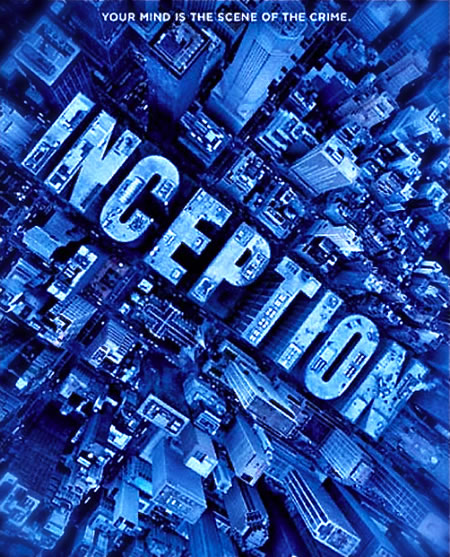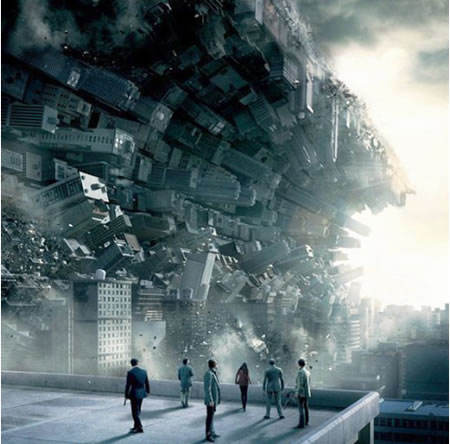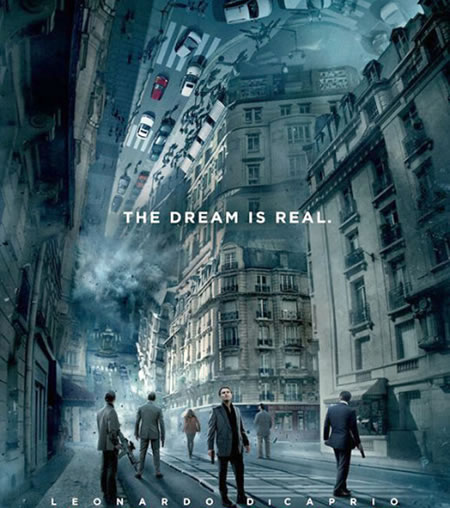The metaphor of the mind, architectural design and the secret of dreams
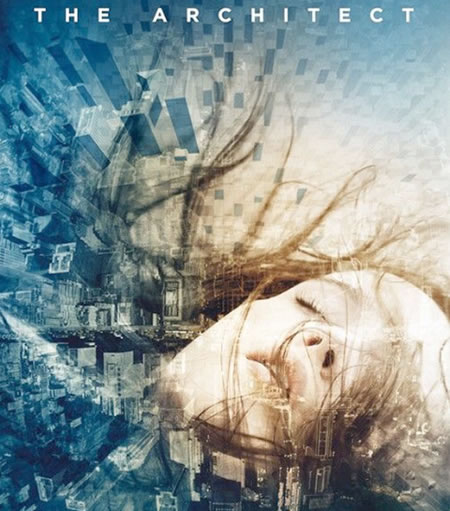
The Architect from the film Inception (Warner Brothers)
From the film: Inception
A conversation with the inceptor and the architect
Cobb: You create the world of the dream. We bring the subject into that dream and fill it with their subconscious.
Ariadne: How could I ever acquire enough detail to make them think that it’s reality?
Cobb: Our dreams, they feel real while we’re in them right? Its only when we wake up then we realize that something was actually strange.
Is the concept of the architect a designer of place that could be the realm of dreams?
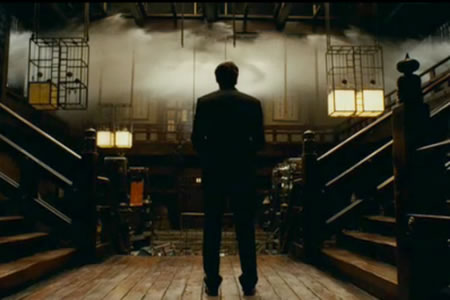
The dream sequence, Japanese mansion flood (Warner Brothers)
The Labyrinth of Inception
I found the character of Inception to be intriguing — labyrinthine and sinuous — in the layering of dreams and imagination.
I might credit Christopher Nolan for the fascination with the concept of looking more deeply into the human psyche — from “Following“, to “Memento,” “Insomnia,” “The Prestige,” to his (soon to be three) treatments of the Batman legacy (and the first time, the psychological presence of not only the concept of Bruce Wayne, but as well, to his villainous antagonists).
But to “Inception” there was something different — another depth. I realize that the audience response is split, but I applaud the Nolan brothers’ move — a risky jump into cerebral place, from the winning legacy of the billion dollar, Batman money making franchise.
But I was compelled by the proposition. Watching it several times, I learned more — and contemplated — of the increasing drop into the layers of the mind — and story — and complexity of the Nolan brothers explorations. It’s an art, like the patina of a washed drawing, or the waxed portraiture of encaustic imagery, there are things that are seen, in scene, and elements that lie beneath — the treatments of chiaroscuro and palimpsest. Light and shadow, with the hints of color seeping into the edge of the mind — and writing that is on writing (now scribbled and scratched away, newly revealed).
Dream and place: Paris
I can recall a time just arriving in Paris, after the airport, running into the city — a Sunday morning. Being one to venture out immediately on arriving, the idea of restlessness of the weary traveler becomes worn in the new hunt of exploration. Still heading out into the city — 8th Arrondissement — I wandered the old streets: mist set in. And without the sun’s location, my perpetual compass — I was lost.
Wandering the Haussmann-style turns, corridors, buildings and lanes, I walked further into the fog — completely lost, in a dream. Weary, travel dizzy, it was a little alarming. Finally, Place Concorde emerged in the earthbound clouds and I found my way back. But the combination of those elements reminded me of the moments of “Inception” in the unfolding dreams of that imagery — streets turning up, curling in the planning of the architect’s dream, the designer of the maze.
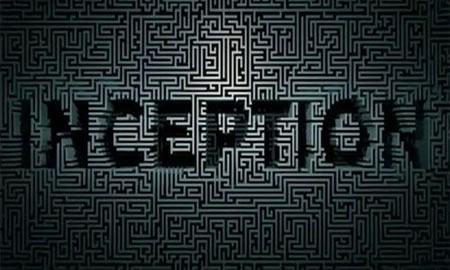
Warner Brothers
It’s far too complicated to relate the telling of the film’s narrative — the nature of the theft and implanting of dreams — and the deep dive into the layers of that voyage. See it, or more here.
But what I found compelling was the bridge between the mind, memory, dreams and ideas — and the designing of labyrinthine mazes, built dream environments, to search and seek out the inner reaches of the mind and memory to implant ideas that could change the course of certain “decisions” — in the story, corporate choices that could influence the chess mate of enterprise battle.
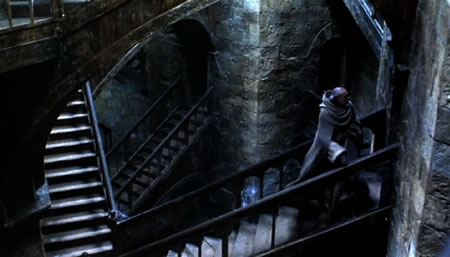
The Name of the Rose film imagery ( the maze of the library)
That aside, the nature of designing dreams for inception requires an architect — a person to build out the worlds that will influence the play of the game. Another story, to the idea of the dream of place, labyrinths, minds and mystery, Umberto Eco’s telling of “The Name of the Rose” spoke to another uncovering, set in the medieval times. The setting, a monastery, a string of murders, an investigator, a library that is a maze and a poisonous scriptorium. Studying that story, and watching the film, I was reminded about the idea in seeing Nolan’s effort. Interestingly, we partnered with the designer of those sets, Dante Ferretti, in creating Rosi — a NYC restaurant.
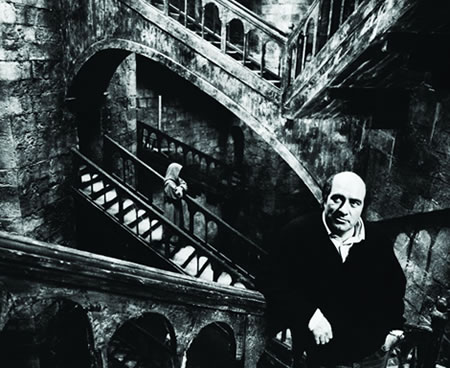
Dante Ferretti. The Name of the Rose (Jean-Jacques Annaud, 1986). Courtesy of Dante Ferretti
But in these images, the idea of the circulation being baffling, dream-like and bewilderingly gravity-less, stairs on stairs — ascensions and descending movements — that mix and match the darkened subconscious perspective of the journeyer, aligns the idea of architecture and the design of the places of imagination.
Jorge Luis Borges, the Latin American author and poet, might be another examiner of this layering of content, consciousness and the design of maze-like journeys. In his world, and his work, the layering of his storytelling takes on the spirit of the Piranesian construction (an Italian artist famous for his etchings of Rome and of fictitious and atmospheric “prisons” — Carceri d’Invenzione) — which layer is up, which back, what path forward, what way — down?
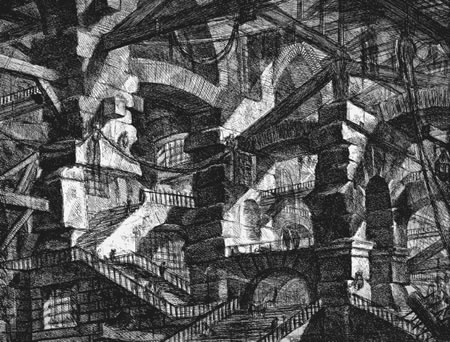
Giovanni Battista (1720-1778)
That world-bending, scene-imploding, shifting of the mind / physical character of “Inception” might be evidenced in the drawing imaginations of this artist — or in the current cinematic scene — the journaled work of Guillermo Del Toro’s Pan’s Labyrinth.
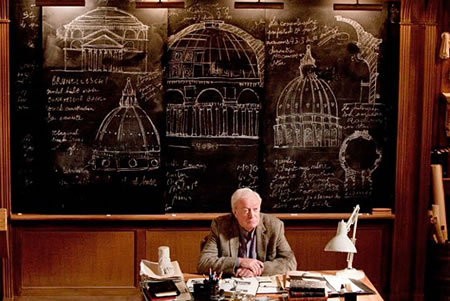
The professor of the architects (Warner Brothers)
The gesture is the idea of creating spaces — building places in the mind that layer and sequence the character of the dream. There, the quality of thinking through the dream — and place — find further concretion in the Nolan brothers’ vision.
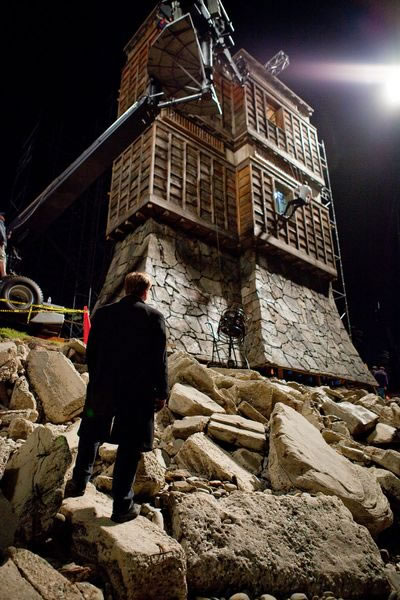
Chris Nolan on the set of the Japanese mansion (Warner Brothers)
The nature of the architecture, the actual “designing” of it, comes from the production designer, a physical interpreter of the visioning of the narrative. The visualization comes in the phases of opening planning meetings (this, my interpretation in being “in” on the process in other films,) then a hand in hand working engagement to link script and physicality together into a seamless interpretation of storytelling.
According to Kristopher Tapley’s notes in 2011, during the pre-release, the work was managed by Guy Dyas, a designer with long associations in elaborate art direction. “Even during his early years as a concept artist, the films were design-heavy. “Men in Black,”“Wild Wild West” and “Galaxy Quest” are examples. Later: Tim Burton’s “Planet of the Apes” and elements of the Wachowski brothers’ “The Matrix Reloaded” benefited from his imagination.”
Geoff Boucher added another layer to how the work was organized — looking for real, as opposed to digitally generated imagery. The environments were built — and manipulated:
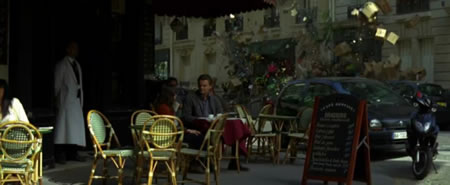
Paris bistro dream scene exploding (Warner Brothers)
“Nolan put a premium on achieving the unreal on camera as opposed to in computer, which runs counter to Hollywood’s obsession with the pixel possibilities of green screen and 3-D. With cinematographer Wally Pfister (Nolan’s director of photography since “Memento”) and special effects guru Chris Corbould (the man who built the Batmobile and has worked on a dozen James Bond films), the director put a premium on an old-school approach to movie magic.”
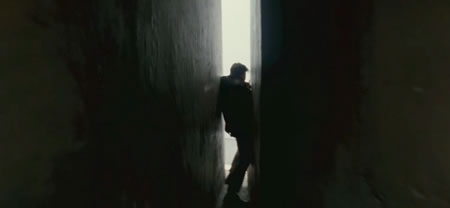
Escaping through an alley (Warner Brothers)
Corbould’s teams, for instance, built giant rotating hallways and a massive tilting nightclub set to film the startling “Inception” scenes when dream-sector physics take a sharp turn into chaos. One of the film’s stars, Joseph Gordon-Levitt, spent long, bruising weeks learning to fight in a corridor that spun like a giant hamster wheel.
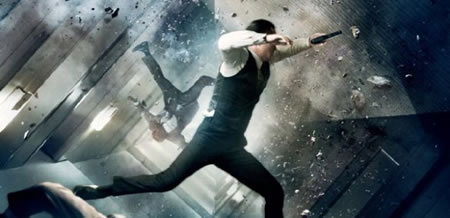
The hallway rotating battle scene (Warner Brothers)
“It was like some incredible torture device; we thrashed Joseph for weeks,” Nolan said. “But in the end we looked at the footage, and it looks unlike anything any of us has seen before. The rhythm of it is unique, and when you watch it, even if you know how it was done, it confuses your perceptions. It’s unsettling in a wonderful way…we want an extraordinary thing that happens in an ordinary way. That’s always been the goal.”
To the nature of Nolan’s inspiration, another layering in the design of places, made: see this interview — about the architect and the dream — in an opening query concerning “architecture,” plus more about that moving set (which, Nolan says, was largely inspired by his childhood love of Stanley Kubrick’s “2001: A Space Odyssey”):
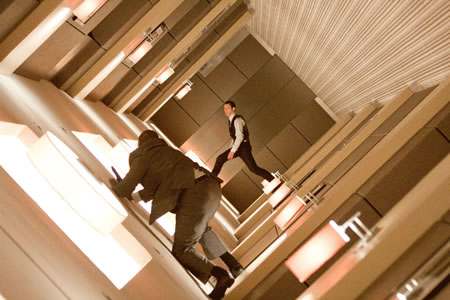
The live set, rotating walls scene (Warner Brothers)
In another interview on the technical aspects of the film, see this overview, posted by Gerard Kennedy, an expert take on the enormous collaboration of the crew, as well as the character of working under Nolan’s detailed development. “‘Inception,’ despite being a visual treat, also seemed a far cry from the CGI spectacles that normally dominate the blockbuster circuit.”
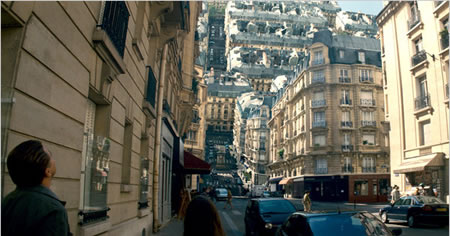
The upending landscape, Paris (Warner Brothers)
According to the review, among the key design and visual constituents, there is “delight in revealing how they collaborated with Nolan – and each other – to make “Inception” look so real. The short answer: “Because it is.” Dyas says working with Nolan was “an absolute dream. We’re very similar in age, have the same kind of humor, and we love and quite frankly despise the same kinds of films.” For Dyas, however, “Inception” was particularly epic. “Intellectually and spiritually, it was the biggest film I’ve worked on. It was a wonderful opportunity to design, draw, and create these worlds.”
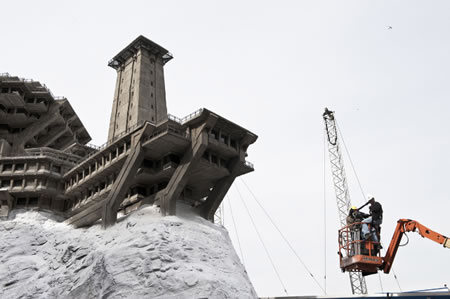
The snow fortress (Warner Brothers)
Kennedy continues, “An example of a set that was completely built, though it would be computer-generated in most films, was the snow fortress. “We wanted it to look realistic,” Dyas recalls. “So we entirely built an 80-foot tower – 400 feet across by 500 feet deep.” But in the Alberta mountains, he was panicked about how to pull this off while also not being able to put concrete foundations down. “I got myself a drink and looking down in the glass, I thought I should fill foundations with water and let it freeze – and we did it! We had a situation where we had built not only a set but a campus from where to work from,” he says.
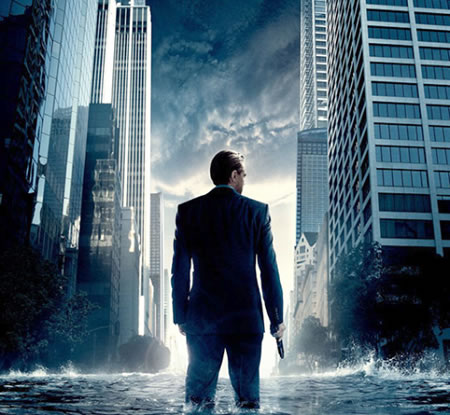
The dissolved, dreamed world: Smashingshare.com
The idea of the architecture of place-making, and dreaming the dream — the palace of the magical memory — is an allegory of ancient perspectives — architecture mirroring the mind.
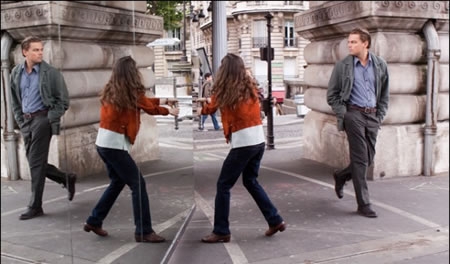
The architect bending her designed reality (Warner Brothers)
In that condition, the concept is that memory can be built, created as a kind of mnemonic device, with various rooms storing varying kinds of recollection. The “loci” has been described by
O’Keefe and Nadel as an approach to memorialization:
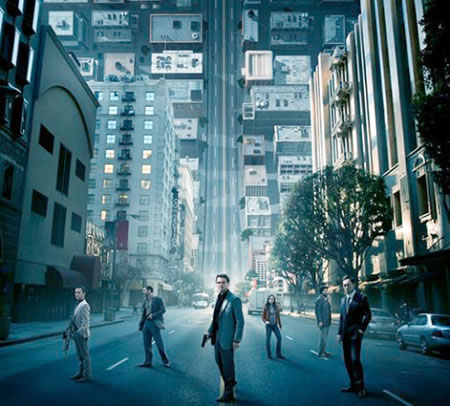
The design of the bending world dream Smashingshare.com
‘the method of loci’, an imaginal technique known to the ancient Greeks and Romans and described by Yates (1966) in her book The Art of Memory as well as by Luria (1969). In this technique the subject memorizes the layout of some building, or the arrangement of shops on a street, or any geographical entity which is composed of a number of discrete loci. When desiring to remember a set of items the subject literally ‘walks’ through these loci and commits an item to each one by forming an image between the item and any distinguishing feature of that locus. Retrieval of items is achieved by ‘walking’ through the loci, allowing the latter to activate the desired items. The efficacy of this technique has been well established (Ross and Lawrence 1968, Crovitz 1969, 1971, Briggs, Hawkins and Crovitz 1970, Lea 1975), as is the minimal interference seen with its use.” (John O’Keefe & Lynn Nadel, “The Hippocampus as a Cognitive Map, Oxford University Press, 1978)

The antigravity of dream place design (Warner Brothers)
The allegory of place — designed — with mind and memory aligned, the path of the deep dream, and the secrets of their telling. Amazement — to the heritage of the maze itself.
As a designer of place, what is the unfolding of the dream, the layering of the library of the mind’s memory, in experiencing the physicality of the unconscious?
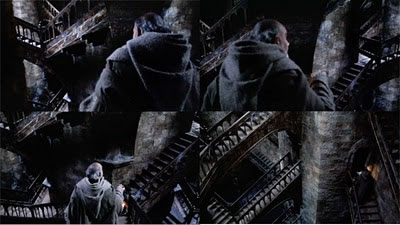
The mazement of “The Name of the Rose.”
THE BRANDSTORIES OF GIRVIN
EXPERIENCE + DESIGN + MEMORY
https://www.girvin.com/blog/?cat=8
the reels:http://www.youtube.com/user/GIRVIN888
girvin blogs:
http://blog.girvin.com/
https://tim.girvin.com/index.php
girvin profiles and communities:
TED: http://www.ted.com/index.php/profiles/view/id/825
Behance: http://www.behance.net/GIRVIN-Branding
Flickr: http://www.flickr.com/photos/tgirvin/
Google: http://www.google.com/profiles/timgirvin
LinkedIn: http://www.linkedin.com/in/timgirvin
Facebook: http://www.facebook.com/people/Tim-Girvin/644114347
Facebook Page: http://www.facebook.com/pages/Seattle-WA/GIRVIN/91069489624
Twitter: http://twitter.com/tgirvin
